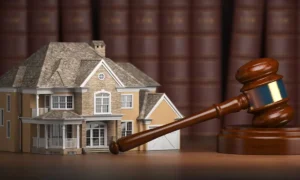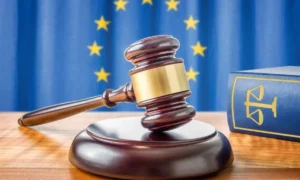In criminal law, discovery refers to the pre-trial exchange of evidence between the prosecution and defense. It aims to ensure both sides have access to all relevant information to effectively prepare for trial.
What is the Purpose of Discovery?
The purpose of discovery is to promote fairness and justice. Both parties have a right to know the strengths and weaknesses of the opposing side’s case. This allows the defense to thoroughly investigate the allegations and the prosecution’s evidence.
It also prevents surprises from arising at trial that could unfairly impact the outcome. Discovery encourages the resolution of cases without trial if weaknesses emerge on either side.
The Exchange of Information Through Discovery
Discovery involves the mutual exchange of materials between the prosecution and defense.
This generally includes:
Document Discovery
The prosecution must disclose all documents, records, papers, photographs, and tangible objects that are material to the case. This could include police reports, forensic analysis, photographs from the crime scene, and the criminal record of the defendant.
Witness Discovery
Both parties must provide lists of all potential witnesses they intend to call at trial, including their names, addresses, and prior statements.
Expert Discovery
If either side intends to call an expert witness, they must disclose the expert’s name, qualifications, and written reports. This allows the other party time to review the testimony and hire their expert if desired.
Interrogatories
Written questions are exchanged between the prosecution and defense regarding the details of the allegations and evidence. Answers provide important details to both sides.
Depositions
Witnesses and experts can be questioned under oath before trial during a video-recorded deposition. This allows all parties to explore testimony and identify any inconsistencies.
The Discovery Process
The discovery process typically begins after criminal charges have been filed. The prosecution must turn over all requested discovery materials to the defense within a court-mandated timeframe, usually 30-45 days. Materials can include:
- Police reports and notes
- Witness statements
- Autopsy reports
- Forensic lab results
- Surveillance footage
- 911 calls
- Criminal records of witnesses
- Tangible evidence like weapons
The defense then has the opportunity to submit written requests for any additional materials they believe could help their case. If disputes arise around specific discovery demands, either side can request a hearing with the judge to determine disclosure.
Types of Evidence in Discovery
In the US criminal justice system, legally discoverable evidence includes both inculpatory and exculpatory materials. Inculpatory evidence points to guilt, while exculpatory evidence tends to prove innocence or cast reasonable doubt.
Some common examples:
- Eyewitness statements
- Confessions
- Forensic testing results ( DNA, fingerprints, ballistics)
- Surveillance footage
- Recordings (phone calls, police interrogations)
- Criminal records
- Photos from crime scenes
- Autopsy reports
- Police reports
- Expert analyses and lab reports
What Evidence is a Defendant Entitled to Receive?
| Evidence Type | Discoverable |
| Inculpatory evidence | Yes |
| Exculpatory evidence | Yes |
| Witness names and statements | Yes |
| Expert reports and qualifications | Yes |
| Prior convictions of prosecution witnesses | Yes |
| Police reports and notes | Yes |
Under Brady v. Maryland (1963), the prosecution has a constitutional duty to disclose all exculpatory evidence to the defense. This ensures defendants receive a fair trial based on all relevant facts.
How is eDiscovery Software Changing the Discovery Process?
The process of electronic discovery, or eDiscovery, has significantly changed how criminal cases manage discovery in the digital age. Prosecution and defense attorneys now rely on specialized eDiscovery software solutions to:
- Collect, process, and review terabytes of digital data sources like email servers, cell phones, hard drives, and cloud storage. This digitized evidence would otherwise be impossible to manually search and produce.
- Conduct searches across all documentary evidence using advanced keyword and concept searching. This allows for highly targeted review of relevant files instead of examining thousands of irrelevant documents.
- Facilitate the production of discovery materials in organized, easily shared formats according to court Electronic Discovery Reference Model standards. Documents, images, and audio/video can all be securely delivered electronically.
- Perform analytics on key metadata attributes to map out relationships between suspects, devices, and digital activities over time. This newfound insight aids investigators and helps focus the merits of the case.
- Automate workflows between different tools used for processing, review, and production. eDiscovery solutions integrate with electronic disclosure platforms accepted by courts to streamline the process.
Conclusion
Discovery plays a crucial function in the US criminal justice system by promoting fairness, transparency, and just case resolutions. Though the process can be complex, continual adaptations like eDiscovery software will help strengthen defendants’ access to evidence while supporting law enforcement’s use of cutting-edge investigative techniques.
Frequently Asked Questions
In criminal law, it refers to the pre-trial process where the prosecution and defense exchange materials from their case investigations. This includes evidence, witness information, records, and other relevant material.
If the prosecution fails to provide the required discovery materials to the defense, it could undermine the defendant’s ability to adequately prepare for trial.
The main steps are:
Charges are filed triggering discovery obligations
The prosecution provides initial discovery
Defense submits additional written requests
Disputes over requests are decided by the judge
Ongoing supplementation as the investigation continues
Materials are reviewed to assess strengths/weaknesses
Negotiations may commence toward a plea deal
All evidence must be disclosed, whether inculpatory (pointing to guilt) or exculpatory (pointing to innocence). This includes witness statements, forensic reports, recordings, photos, documents, the criminal record of witnesses, police notes, and tangible evidence.










